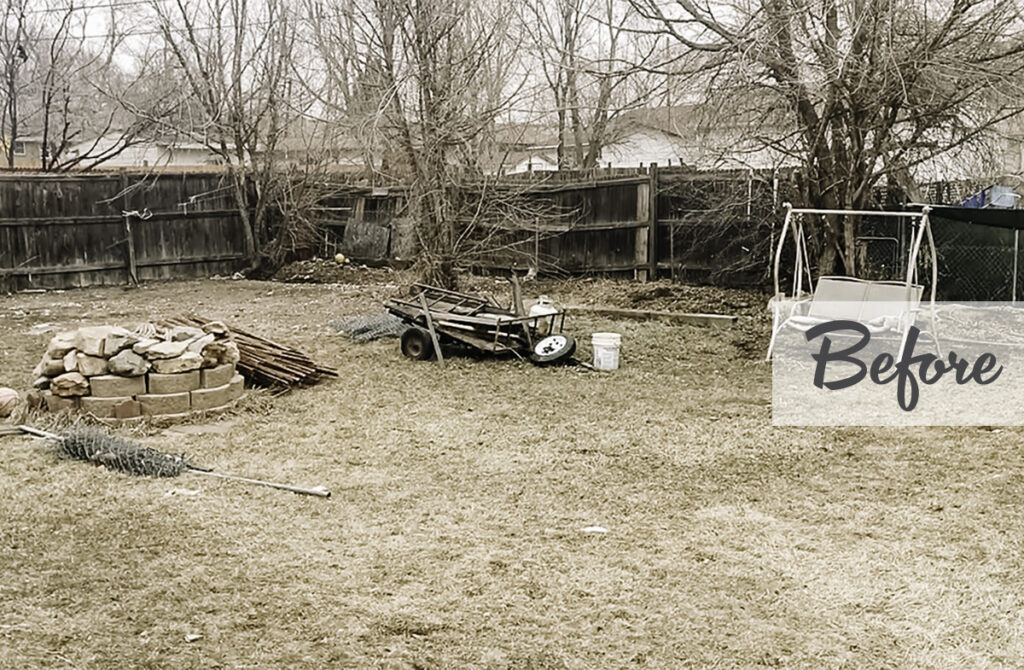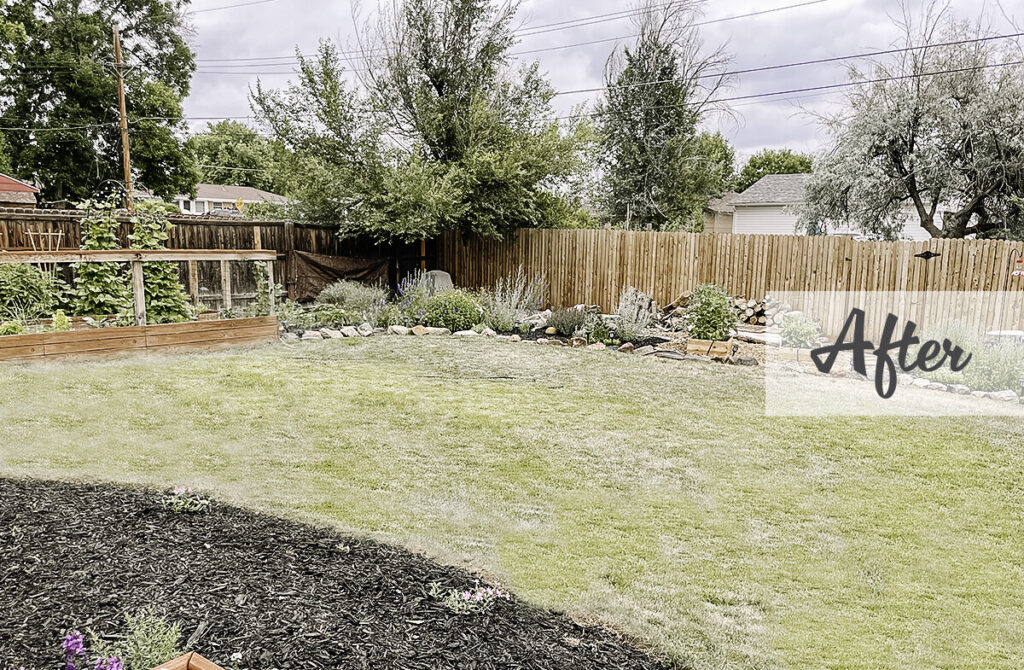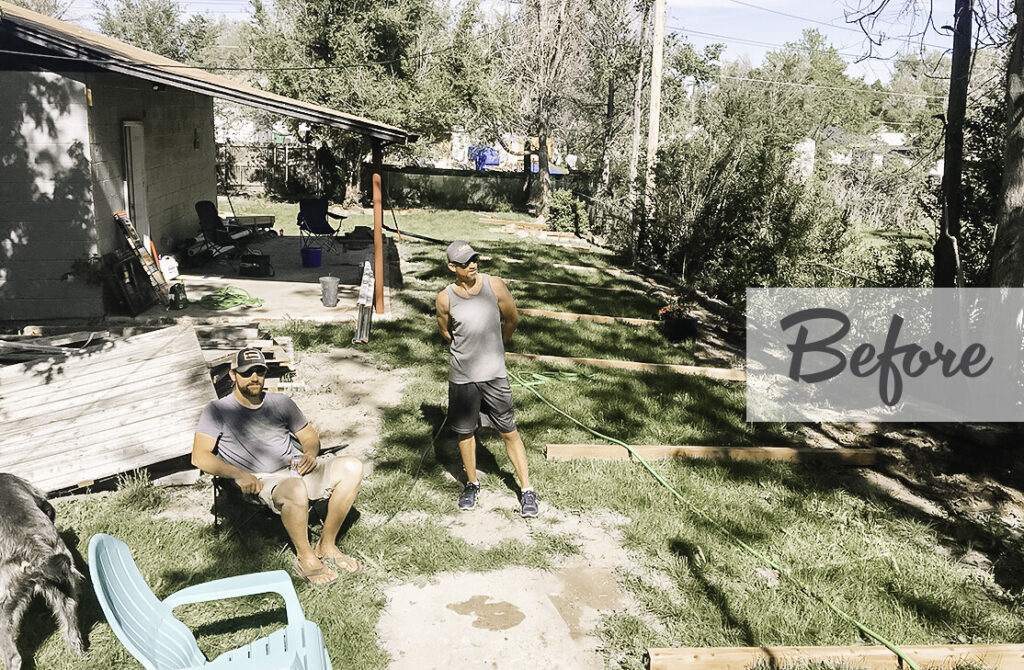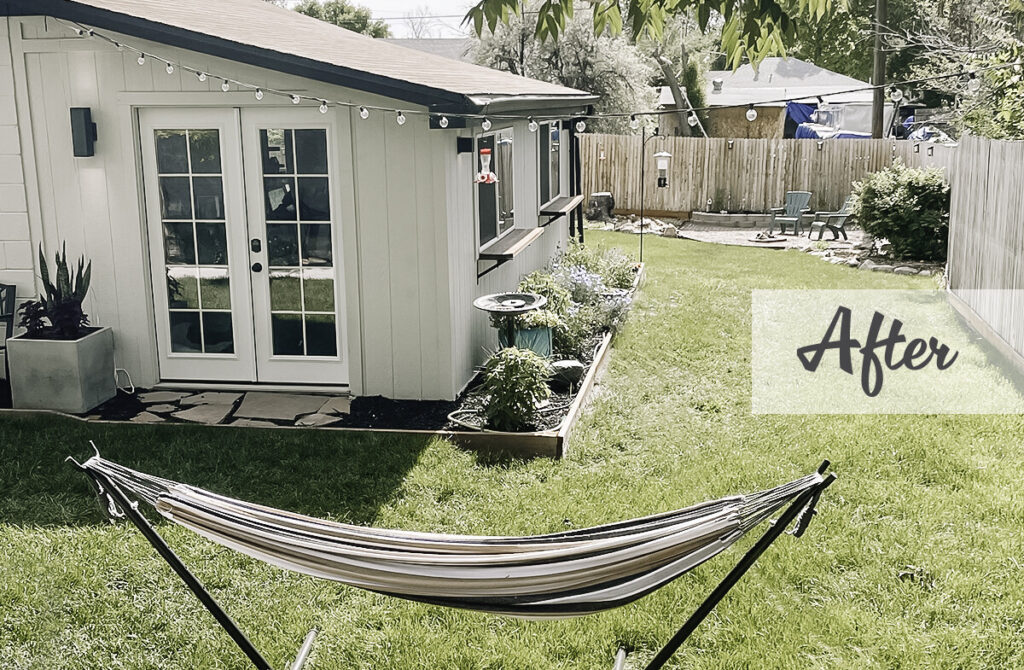Having a beautiful and well-maintained garden is a dream for many of us, but budget constraints often hold us back from achieving it. Creating your backyard can be expensive, but it doesn’t have to be. With the right planning and strategy, you can transform your outdoor space into a stunning landscape without breaking the bank.
When we first moved into our Denver home, the property was a complete mess. The previous homeowners had really neglected things and had borderline turned it into a hoarding situation both inside the home and in the backyard. It needed love – and lots of it.
In the summer of 2017, we began our endeavor cleaning up and planning our the backyard. We wanted to turn it into an outdoor living space that we could enjoy together and with our family and friends. The task seemed overwhelming. But we got started and little by little, year after year, we put in the work needed to start transforming it into a revived garden.
I knew nothing about gardening or landscaping when we started out in this home. We learned by trying things. We discovered what worked and what obviously didn’t. Here, through my trial and errors, I’ll share some tips and tricks that will help you renovate your garden and backyard on a budget.
Set Your Expectations
When we first started renovating our yard, I remember thinking I just wanted it to look some of our neighbors’ yards. I looked at their gardens and hoped mine soon would resemble something like theirs. One neighbor said something to me that I won’t forget. She told me that her beautiful garden took five years to look like it did. Wow, okay, so this was going to take some time.
With that said, my first offer of advice to is set your expectations that creating your dream garden will take time. Unless you have infinite funds and can hire all the landscaping out in the first summer, creating your vision can take years. Plants take years to reach their fullest mature size. Gardening is a process that you can’t force. It’s part of what makes it so enjoyable. There is always something new to implement each year. We’ve found that doing the work ourselves and taking our time doing it is very rewarding.
Make a Priority List
When you first begin renovating a garden or backyard space, the shear number of tasks can seem overwhelming. You need to put a flower bed here, a vegetable garden there, and don’t forget about the privacy fence you want around the entire yard. The list seems endless. And it is, right? Because that’s the point: there’s always something new and creative to make happen in the garden! So essentially the list won’t end unless you want to be finished.
Prioritizing the tasks you’d like to complete in the first summer is essential. Not only does it take the overwhelm out of the project, but it helps curb spending. It will narrow down your spending focus to the most important goals of the gardening season — and thus, helping you successfully renovate your garden on a budget.
Set a Budget
Before you start renovating your garden, you need to have a loose plan in place so you can set your budget. A well-planned garden not only looks better but is also easier to maintain. Start by sketching a rough plan of your garden on paper, including the areas you want to renovate or change. Then, list out the types of plants, flowers, trees, and hardscaping features you may want to include.
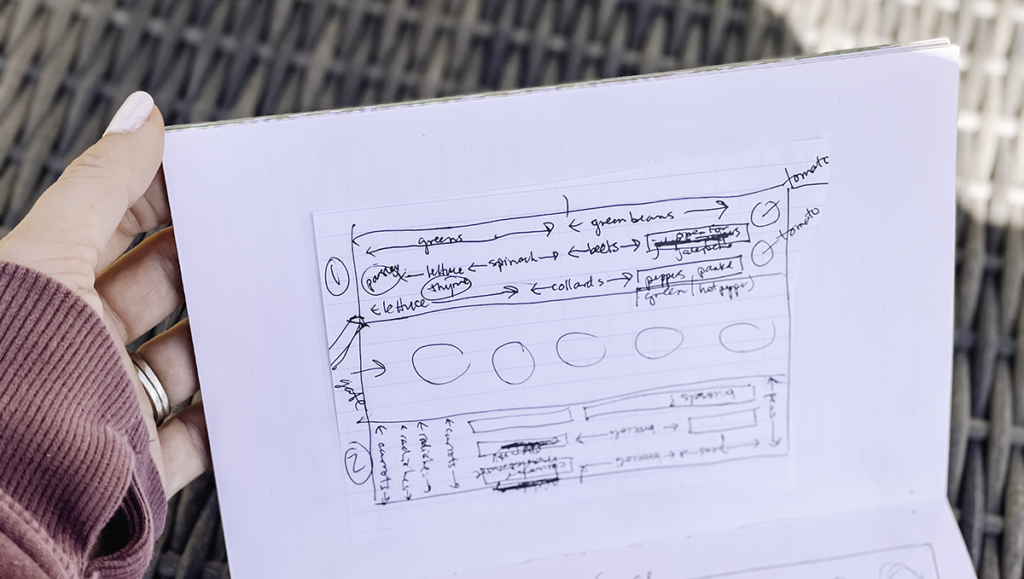
I often draw out my full plan for what I’d like in a garden space, but also know in the back of my mind that I might not be buying all the plants I want in the first year. Visually speaking, sometimes it’s nice to start out small anyway. Plant the first grouping of plants in the space and see how that looks first. From there, you can see how the plants fill in overtime and determine if you still need to add something for height, etc.
Starting small when planting your garden also allows you to
Grow Some Plants from Seed
Buying plant starts from local nurseries is a great way to get your garden growing a little more quickly. These nurseries have already taken the few months of time needed to grow the plants from seed, so you have a little jump on your growing season. However, plant starts do cost more. Starting part of your garden from seed can be a great option for renovating your garden on a budget.
As a new gardener, I don’t recommend growing your entire garden from seed for a couple reasons. For one, some varieties of flowers and plants can be a little trickier to germinate outside of a greenhouse. I want new gardeners to have success when starting out to eliminate frustration and feeling defeated if seeds don’t end up germinating. Furthermore, if you grow your entire garden from seed, it will push you to mid to late summer before you see any sort of mature growth. And some of your plants will be very small the first year or two.
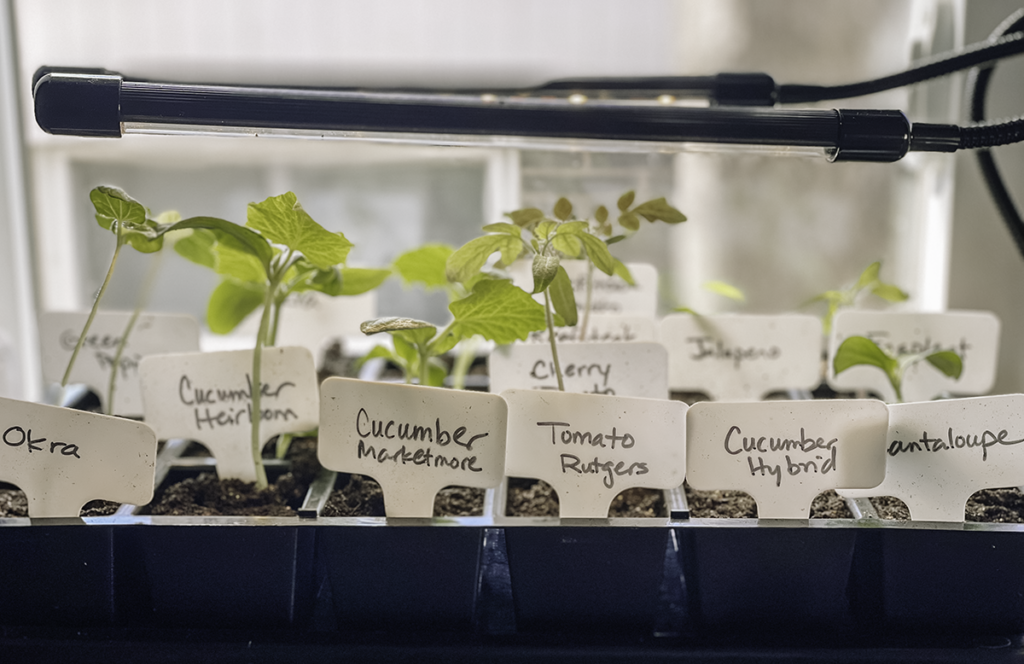
Plant starts provide some immediate visual satisfaction of seeing things growing in the garden as soon as you plant them. But combining the starts with some flowers or vegetables started from seed can be a great option for additional growth with a lower price point. You can even get this process started indoors prior to the growing season. Just do your research on the seeds/type of plant before buying and follow the instructions on how to germinate. Also, be sure you have a plan in place for keeping the soil moist throughout the day until the seedlings start to grow.
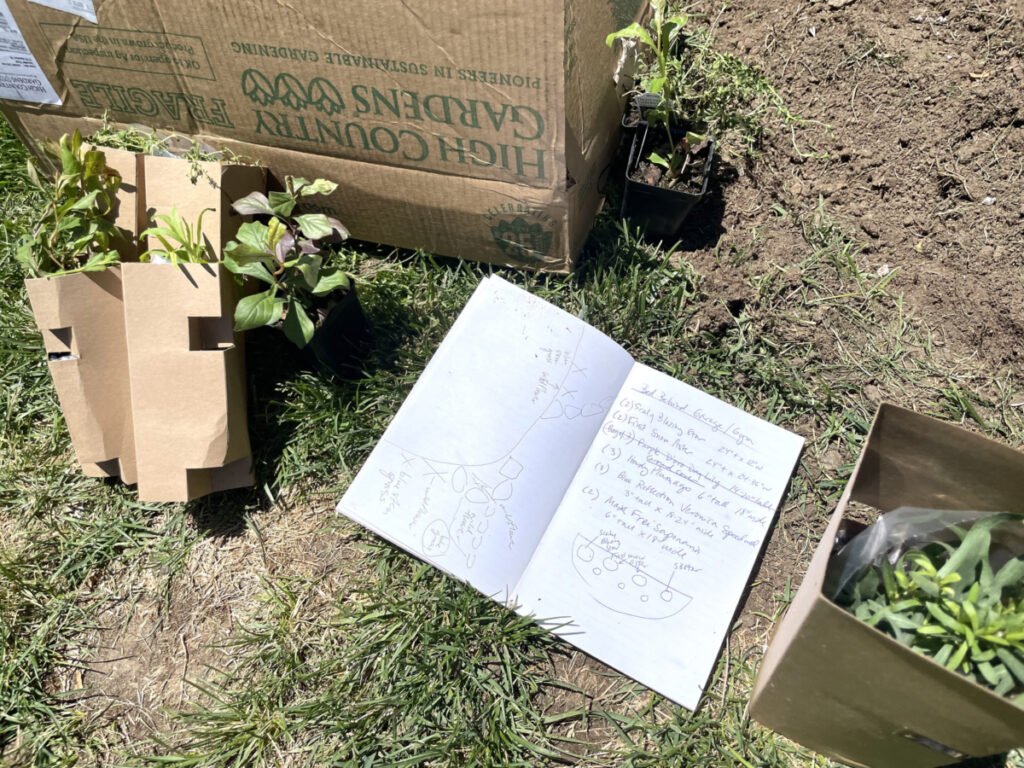
Choose Perennial Plants When Possible
There is one thing I wish I would’ve realized more when first starting my garden. And that is that perennial plants come back year after year! There are two types of plants: perennials and annuals. Perennials regrow every spring so it’s a huge benefit for planning a garden on a budget. Annual plants don’t come back the next year. They bloom all summer and die off when the temperatures get cold.
In general, perennial plants do bloom for a shorter amount of time so you’ll probably always want to scatter in some annual flowers to your garden beds each year. But buying perennial plants as the base for your garden will save you money in the long run.
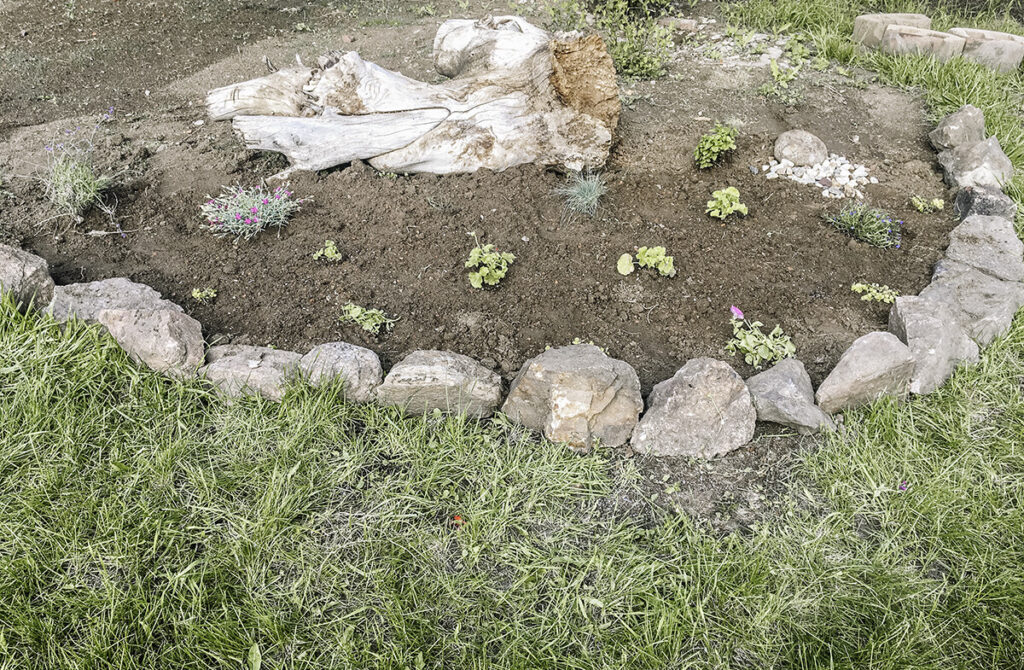
Use Repurposed Items to Garden on a Budget
Why buy new when you can buy used for less? Facebook Marketplace is my go-to spot for finding used garden and landscaping supplies. Garage sales can also be worth checking out if you prefer old school methods of repurposing! But Facebook Marketplace is a great resource that I look at often to see what people are selling that can save me money when renovating a garden space. Oftentimes, if you’re willing to load and haul, you can even find free landscaping rock and stones to repurpose in your backyard.
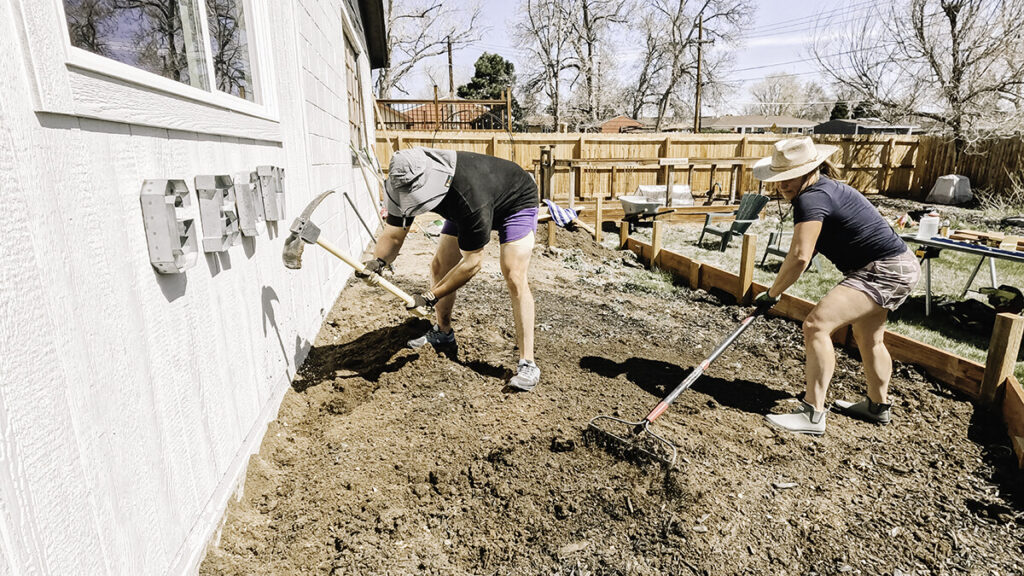
DIY Garden Projects
One of the best ways to save money on garden renovations is by doing things yourself. Numerous DIY backyard projects can transform your garden without costing a fortune. You can create a vertical garden, build a birdhouse or a garden bench, or even make your own planters. With a vast amount of online resources like YouTube video tutorials (and garden blogs like Beneath the Maple…shameless plug!), you can learn to build and construct almost anything in your garden. With a little inspiration and a few tools, you can create a beautiful garden space all on your own while adhering to your gardening budget.
Shop Smart to Garden on a Budget
Last but not least, shop smart when renovating your garden on a budget. Look for deals, discounts, and sales on plants, soil, mulch, and other landscaping supplies. While I love supporting local garden centers whenever possible, some landscaping materials especially will be found in more abundance at Lowes or Home Depot. I have these stores’ apps on my phone to check periodically which one has lower prices on things like mulch or landscaping material. You can also consider buying plants that are discounted because they are out of season or have a few blemishes. Don’t shy away from buying used plants either (hello again, Facebook Marketplace!), as they can be a great way to save money.
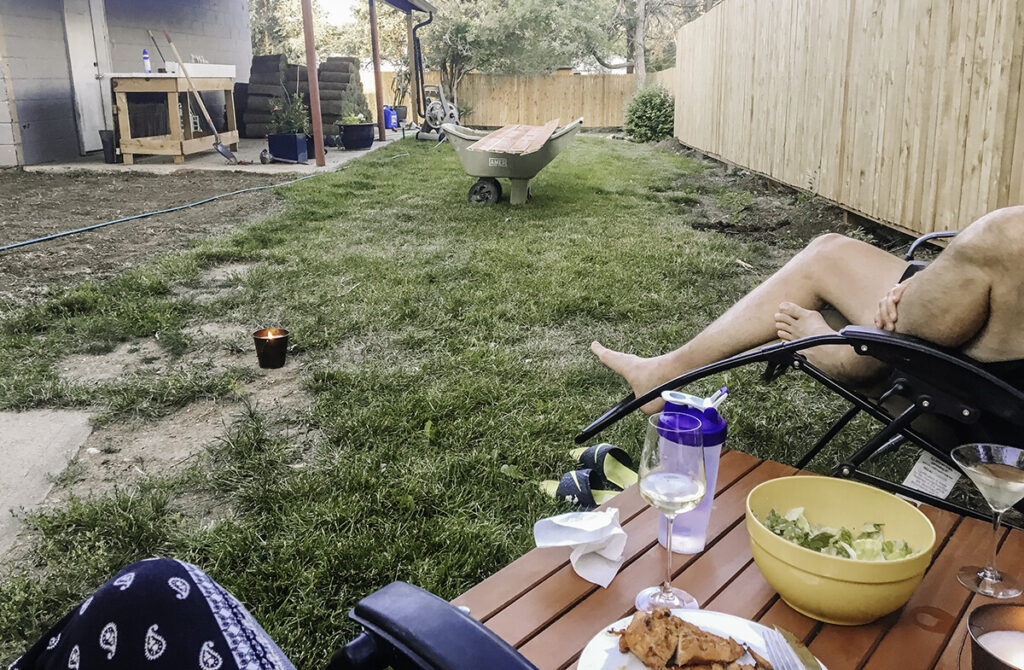
Conclusion
Renovating your garden on a budget doesn’t have to be overwhelming or impossible. By following these tips and tricks, you can turn your garden into a beautiful and appealing space without breaking the bank. Remember to set a budget, plan your garden, opt for DIY projects, choose low-maintenance plants, and shop smart when renovating your garden. A little creativity, patience, and effort can go a long way in creating a beautiful garden space. Happy gardening!



